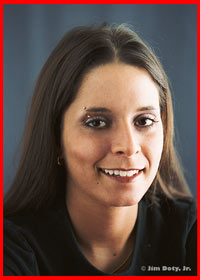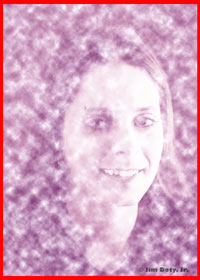JimDoty.com |
|||||||||||||||||||
|
|
|||||||||||||||||||
 |
 |
|||||||||
Layers in Photoshop Layers in photoshop create lots of possibilities. Even in basic photo editing, it is best to create a duplicate layer and do editing, filters, and other changes in the layer. If you don't like the result, throw the duplicate layer into the trash can and start over with the original unchanged layer. Layers also make possible infinite special effects. The image at upper right is one example. Color must be discarded from the image on the left before it is added back to the image on the right. The best grayscale image was achieved by first going to
Return the image to color mode by doing Create a duplicate layer: With the upper layer still selected, do Image > Adjust > Levels
allows you to lighten, darken, or change the contrast of the image by moving the three triangular sliders. For the image above, I chose a light, pastel, high key effect. You can change the overall color of
the image by going to |
||||||||||
A larger version of Kea in the clouds. |
||||||||||
Feb 11, 2001 |
||||||||||



